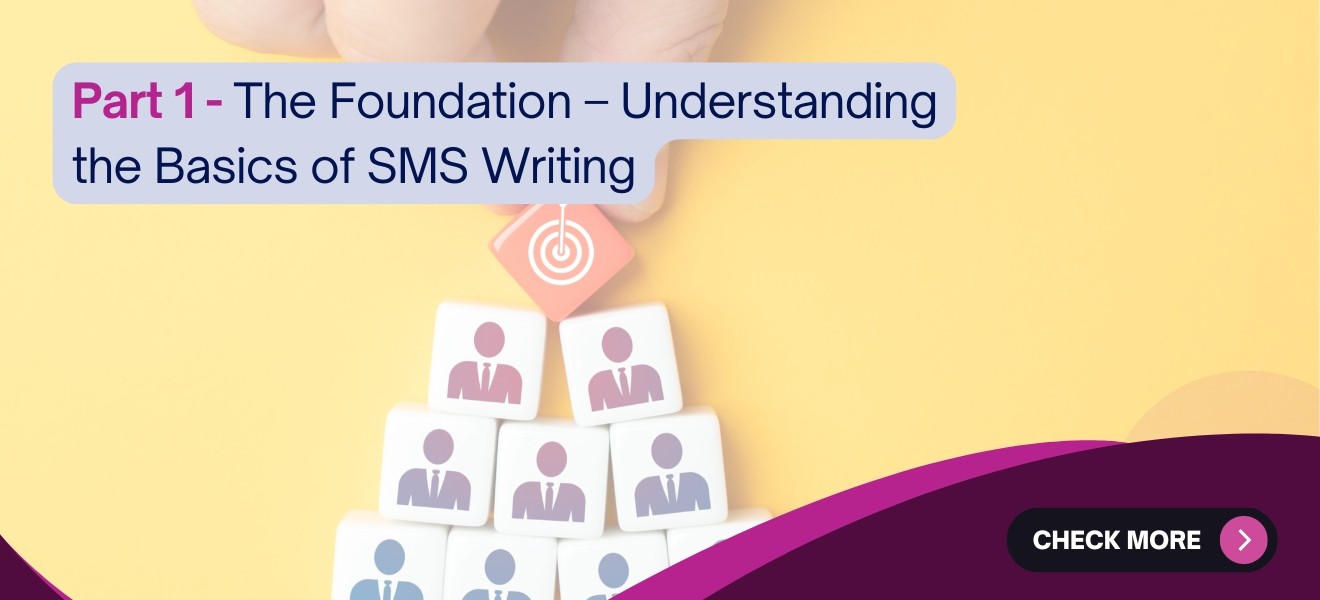
SMS marketing is one of the most powerful tools for communication. However, the success of an SMS doesn’t depend solely on sending it. To be effective, it must be clear, concise, and personalized. In this first part of our article series, we’ll explore the fundamental principles of SMS writing so you can get the most out of your campaigns.
Why is SMS Effective? The Power of Direct Communication
One of the biggest advantages of SMS marketing is its immediacy. Unlike emails or social media posts, which may get lost among dozens of notifications, SMS messages land directly on the customer’s mobile phone.
Why do businesses rely on SMS marketing?
-
Higher engagement – People are far more likely to read and respond to an SMS than an email.
-
No internet required – SMS is accessible on any mobile phone, anytime, without the need for an internet connection.
- Direct and personal communication – SMS creates a sense of immediacy, making it ideal for personal offers and real-time updates.
Did You Know?
-
90% of SMS messages are read within 3 minutes of being received.
-
SMS campaigns enjoy an average response rate of 45%, compared to only 6% for email.
- 75% of consumers prefer to receive promotional messages via SMS over other channels (email, flyers, ads, etc.).
Tips for Clear & Effective SMS Writing:
-
Be direct – Avoid lengthy intros. Get straight to the point. The goal is to communicate within a few words (typically under 160 characters).
-
Use abbreviations carefully – Shorten words only if they remain clear (e.g., “24HR” instead of “24 hours”).
-
Avoid unnecessary words – Instead of “We’d like to inform you that…” say “🔥Big offer!”.
- Use action-oriented phrases – Encourage immediate action (e.g., “Order now”, “Claim your discount”).
Example:
❌ Too long & vague: “Hello, we would like to inform you that our store is having a special promotion this weekend. Don’t miss it! TEL: 210XXXXXXX”
✅ Short & punchy: “🔥 Weekend Sale: 30% OFF! Visit us Sat–Sun. Shop now: (LINK)”
Why does the short and punchy version work better?
-
It delivers the core message instantly (“🔥Weekend Sale: 30% OFF!”).
-
It gives a clear instruction (“Visit us Sat–Sun”).
-
It includes a Call-to-Action (CTA) (“Shop now: [LINK]”).
What is a CTA (Call to Action)?
A CTA is the part of the message that invites the recipient to take a specific action. It’s the most critical part of an SMS—it determines whether the recipient will engage or ignore the message.
CTA Examples:
-
“Shop now”
-
“Book your appointment here”
-
“Grab the deal before it expires”
-
“Order with 20% OFF”
A great CTA should be clear, direct, and urgent, guiding the recipient to take a meaningful action (purchase, sign up, visit, respond). Best practices include using a phone number or link inside the message.
Know Your Audience: Targeted Messages for Maximum Impact
Not all customers are the same—sending generic messages reduces effectiveness. Instead, segment your audience and send messages tailored to their needs
Key Factors:
-
Location – Target local promotions.
-
Shopping habits – Offer discounts based on purchase history.
-
Special occasions – Personalized birthday or anniversary offers.
Personalized SMS Example: “🎂 Happy Birthday, Alexander! Enjoy 20% OFF your next order. Code: BDAY20. Valid until Sunday 3/23. Shop here: (LINK)”
Why it works:
-
It’s personal – uses the customer’s name.
-
Creates a sense of exclusivity – the discount is just for him.
- Gives a clear action step – “Shop here: (LINK)”.
The Power of Personalization: SMS That Make You Feel Special
Research shows that personalized messages generate 7 times more engagement than generic ones.
How to Personalize Your SMS:
-
Use the customer’s name – “Hi Maria, your favorite perfume is back!”
-
Refer to past purchases – “George, hope you enjoyed your last coffee! Reorder now with 10% OFF.”
-
Create a sense of exclusivity – “Exclusive VIP offer just for you, Eleni! 30% OFF until midnight!”
Example: “Maria, your favorite perfume is back in stock! Order now before it sells out: (LINK)”
The more relevant and personalized the message, the higher the chance of response.
Conclusion
To use SMS effectively, keep your messages short, clear, with strong CTAs and audience-targeted personalization.
What’s next?
In the second part of this series, we’ll go one step further, presenting advanced SMS writing techniques such as creating urgency and crafting optimal CTAs.
